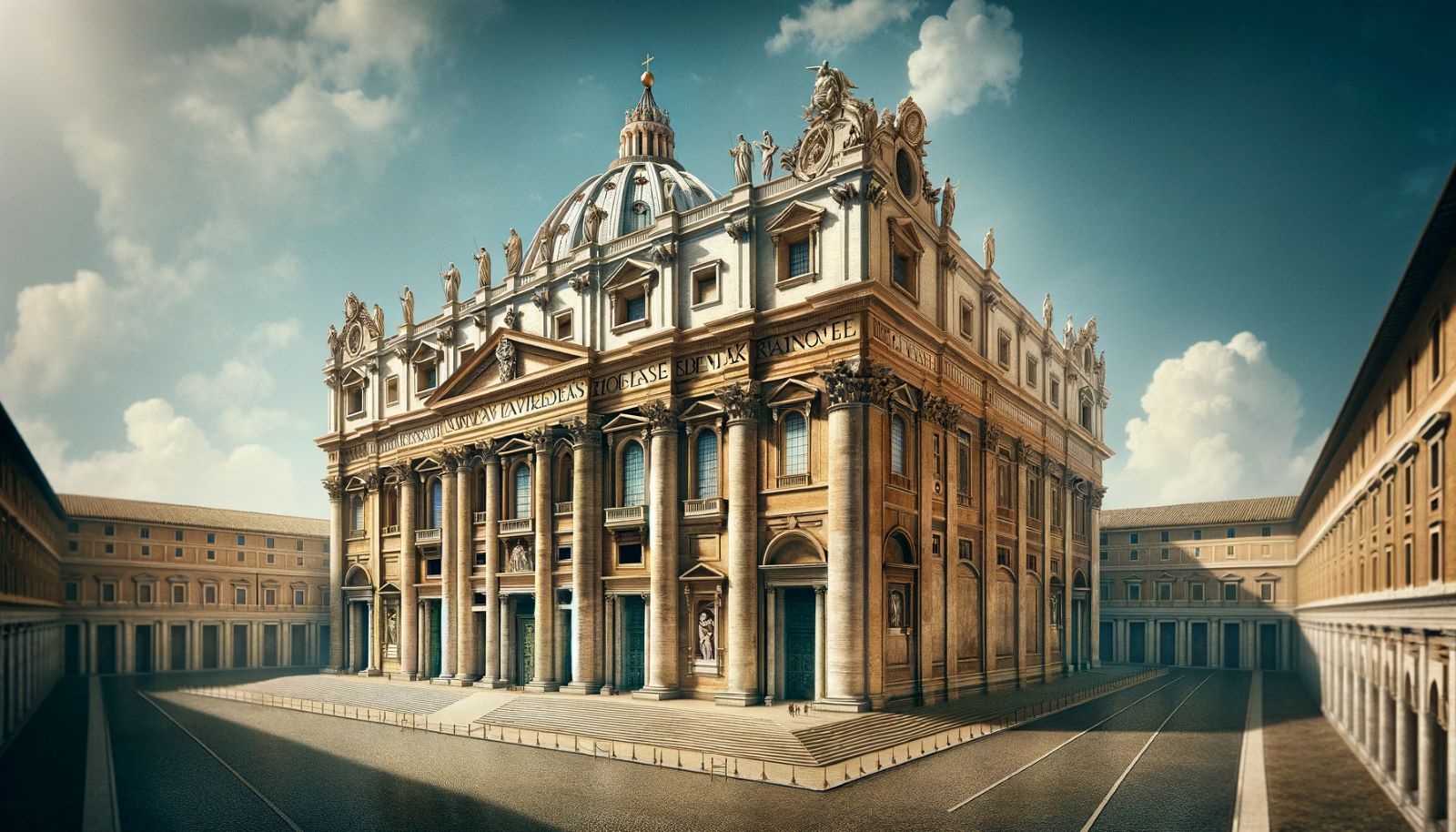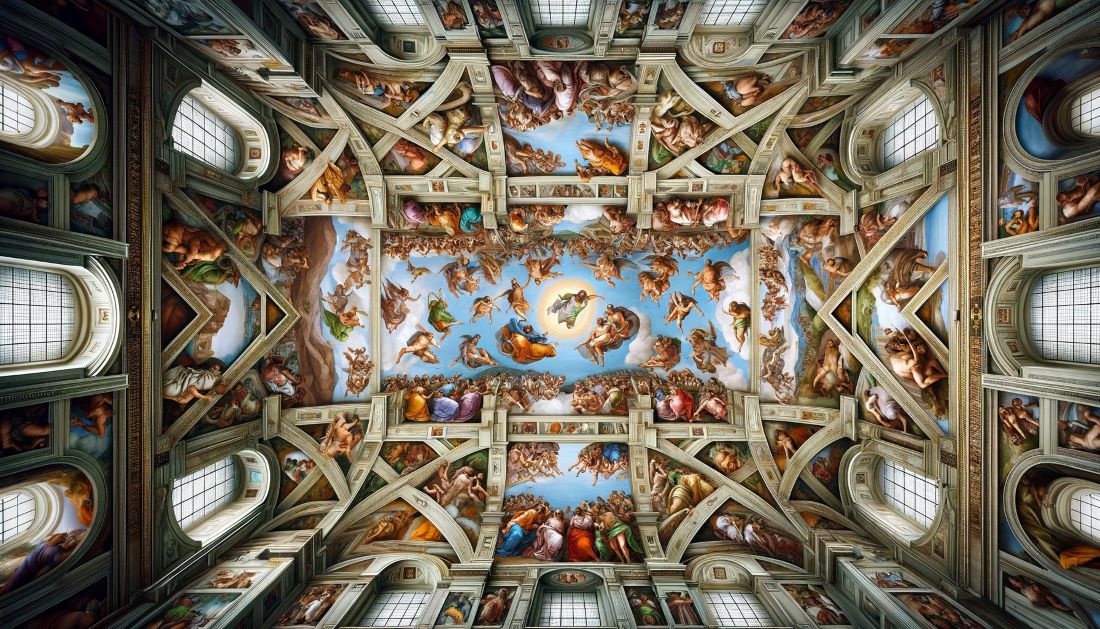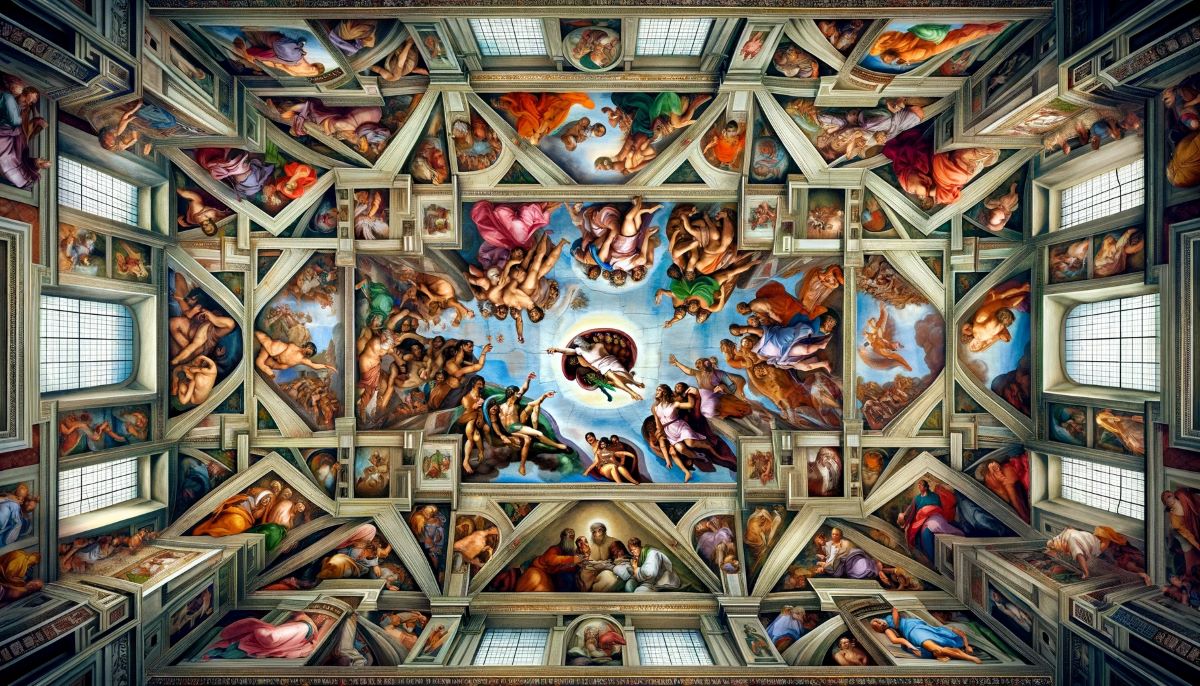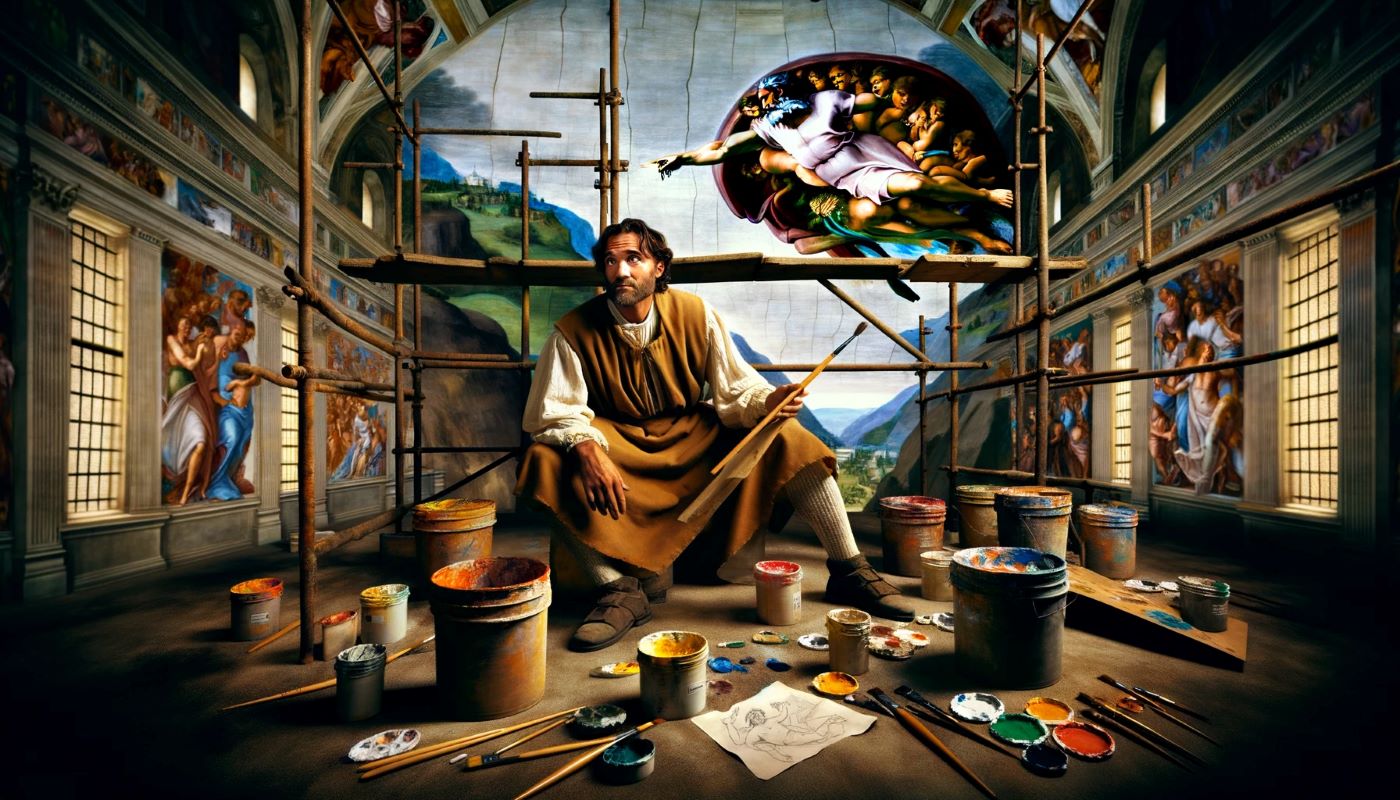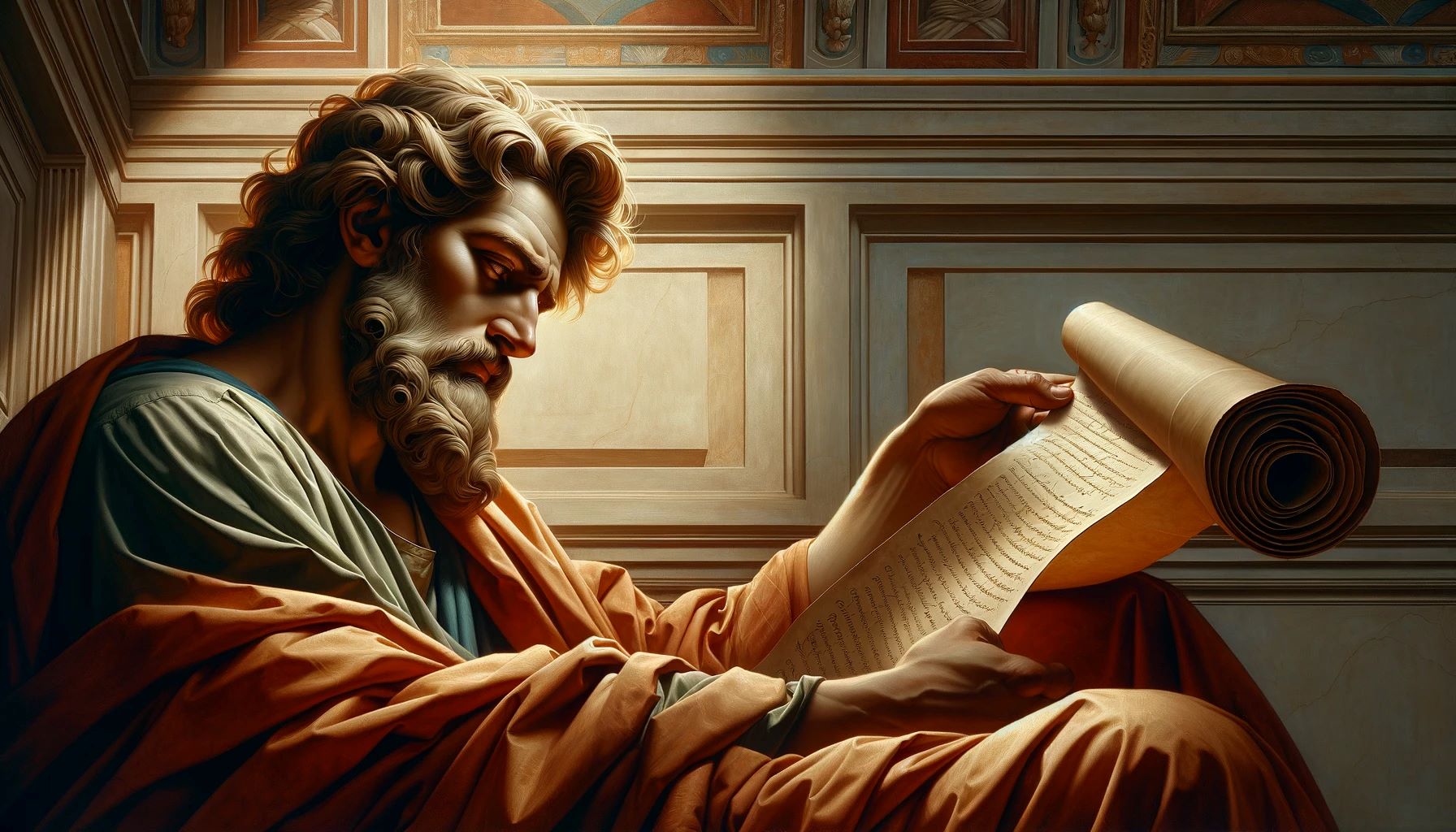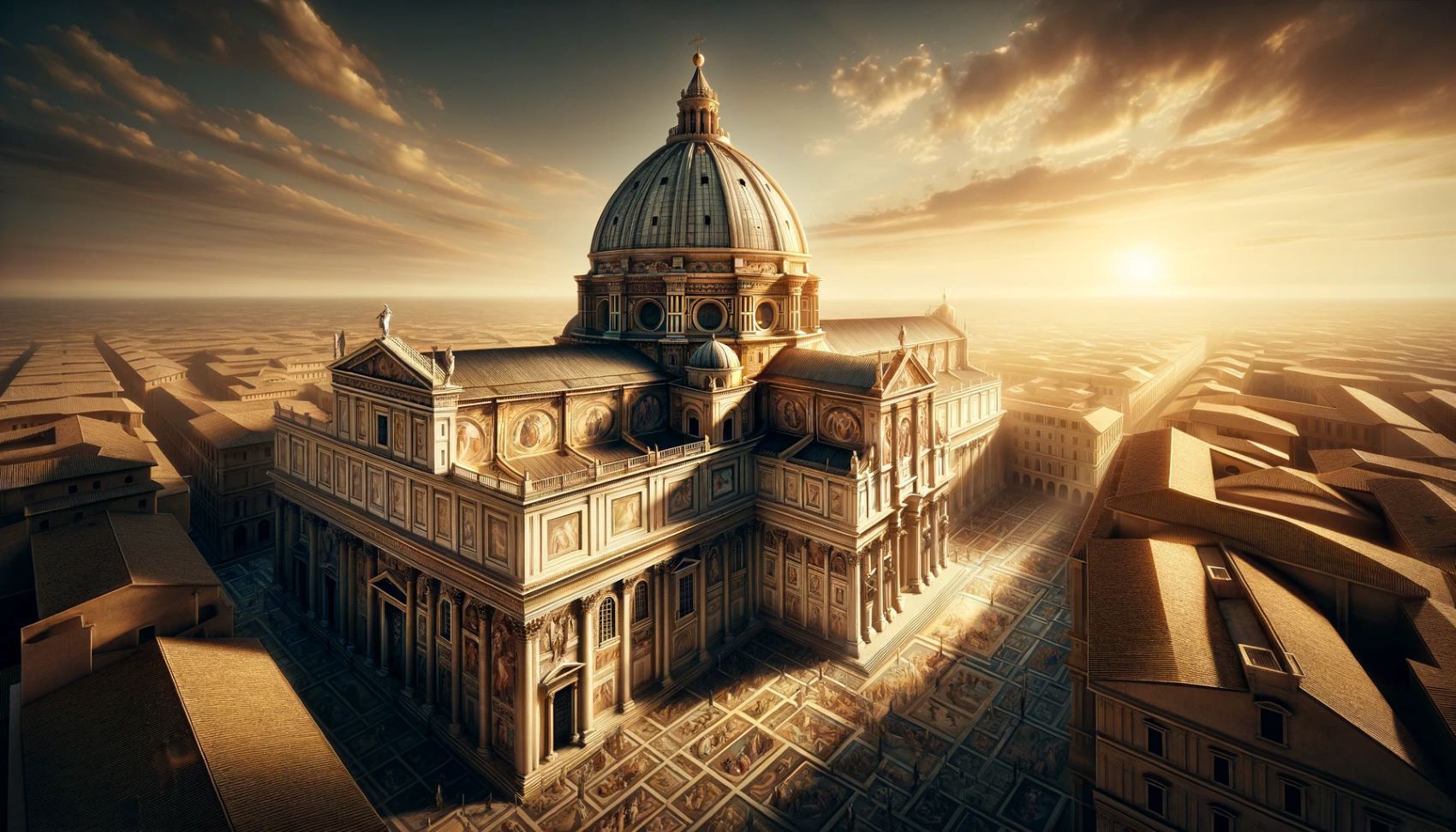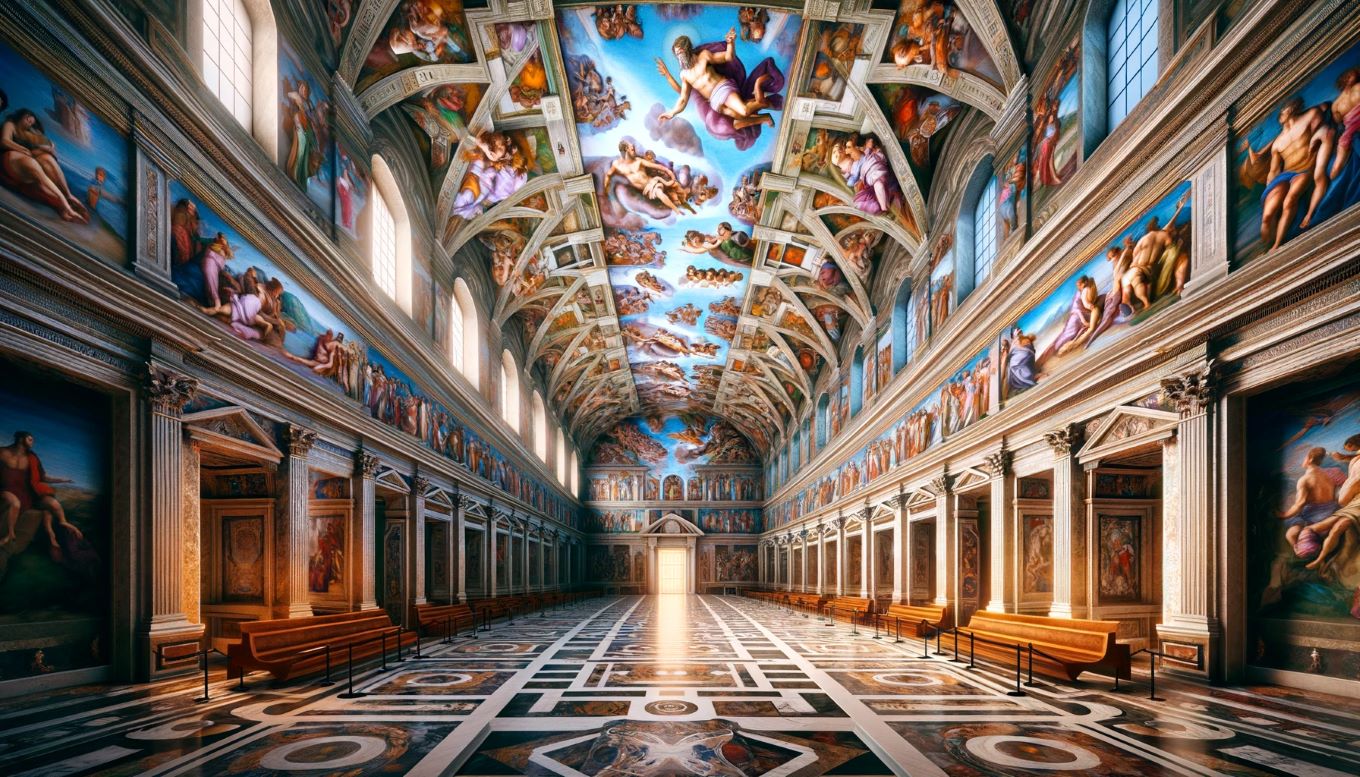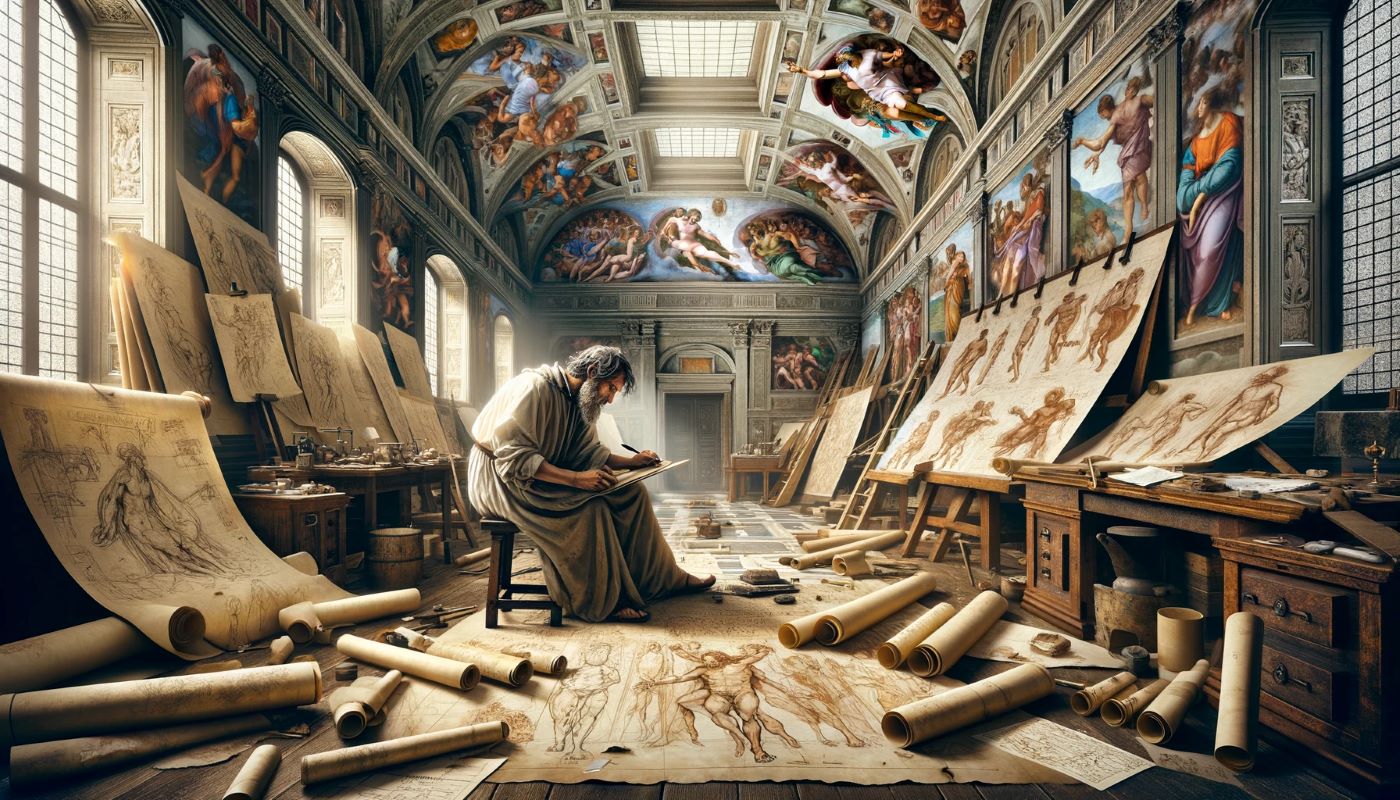Home>Arts and Culture>How Was The Sistine Chapel Restored


Arts and Culture
How Was The Sistine Chapel Restored
Published: March 4, 2024
Jason DeRose, Managing Editor at Christian.net, uses his expertise in religion and journalism to deepen understanding of faith's societal impacts. His editorial leadership, coupled with a strong academic background, enriches the platform’s diverse content, earning him recognition in both journalism and religious circles.
Discover the meticulous restoration process of the Sistine Chapel and the impact it had on the arts and culture. Explore the historical significance and artistic mastery behind this iconic masterpiece.
(Many of the links in this article redirect to a specific reviewed product. Your purchase of these products through affiliate links helps to generate commission for Christian.net, at no extra cost. Learn more)
Table of Contents
The History of the Sistine Chapel
The Sistine Chapel, located in Vatican City, is one of the most renowned cultural and artistic treasures in the world. It was commissioned by Pope Sixtus IV in the late 15th century and was consecrated on August 15, 1483. The chapel was originally designed to be a place of worship and prayer for the Pope and the cardinals of the Catholic Church. However, its significance transcends its religious function, as it is also celebrated for its stunning architecture and, most notably, for the breathtaking frescoes adorning its interior, particularly the ceiling and the altar wall. The chapel's name is derived from Pope Sixtus IV, who oversaw its construction and dedicated it to the Assumption of the Virgin Mary. The Sistine Chapel has since become a symbol of the intersection of art, religion, and history, attracting millions of visitors each year who come to admire its beauty and significance.
Read more: When Was The Sistine Chapel Restored
The Sistine Chapel's Significance in Art and Religion
- Artistic Masterpieces: The Sistine Chapel is renowned for its collection of frescoes, most notably Michelangelo's ceiling and Last Judgment, which are considered some of the greatest masterpieces of Western art.
- Religious Importance: As a place of worship for the Catholic Church, the Sistine Chapel holds immense religious significance. It is the site of papal conclaves, where the College of Cardinals gathers to elect a new pope, and is also used for various other religious ceremonies and liturgical events.
Architectural Evolution
- Original Design: The original design of the Sistine Chapel was the work of architect Giovannino de Dolci, who created a simple, rectangular building with a barrel-vaulted ceiling.
- Renowned Renovations: Over the centuries, the chapel underwent several renovations and artistic embellishments, with notable contributions from renowned artists such as Botticelli, Perugino, and of course, Michelangelo.
Cultural Legacy
- Tourist Attraction: The Sistine Chapel's artistic and historical significance has made it a major tourist attraction, drawing visitors from all over the world who seek to witness its grandeur firsthand.
- Influence on Art and Architecture: The artistic and architectural elements of the Sistine Chapel have had a profound influence on subsequent works of art and religious architecture, leaving an indelible mark on the cultural landscape.
The Sistine Chapel stands as a testament to the enduring legacy of art, religion, and history, captivating the hearts and minds of people across the globe. Its rich history and cultural significance continue to inspire awe and admiration, making it a timeless symbol of human creativity and spiritual devotion.
The Damage to the Sistine Chapel
The Sistine Chapel, despite its grandeur and historical significance, has not been immune to the ravages of time and environmental factors. Over the centuries, the chapel has suffered various forms of damage, posing significant challenges to its preservation and maintenance. The following are some of the primary sources of damage that have affected the Sistine Chapel:
-
Humidity and Temperature Fluctuations: The Sistine Chapel's location within Vatican City exposes it to fluctuating levels of humidity and temperature. These environmental variations have contributed to the deterioration of the chapel's interior, including its frescoes and architectural elements. High humidity levels can lead to the formation of mold and mildew, while extreme temperature fluctuations can cause structural stress and damage to the artwork.
-
Air Pollution: The presence of air pollutants, both from external sources and human activity within the chapel, has posed a significant threat to the preservation of its artistic treasures. Particulate matter and chemical pollutants can adhere to the surfaces of the frescoes, leading to discoloration, erosion, and chemical reactions that degrade the artwork over time.
-
Natural Aging: As with any historical structure, the Sistine Chapel has undergone natural aging processes, including the degradation of building materials, the weakening of structural components, and the fading of pigments used in the frescoes. These age-related changes have necessitated ongoing efforts to mitigate their impact and preserve the chapel's integrity.
-
Previous Restoration Attempts: While restoration efforts are essential for the preservation of the Sistine Chapel, past interventions have not always been executed with the best methods or materials. Some earlier restoration attempts, particularly in the 20th century, inadvertently caused damage to the original artwork due to the use of harsh cleaning agents and improper techniques.
-
Visitor Impact: The high volume of visitors to the Sistine Chapel has also contributed to its wear and tear. Foot traffic, body heat, and the accumulation of dust and debris brought in by visitors can gradually degrade the chapel's interior, necessitating measures to manage and mitigate the impact of tourism on its preservation.
The cumulative effect of these damaging factors has underscored the urgent need for comprehensive restoration and conservation efforts to safeguard the Sistine Chapel's artistic and architectural heritage for future generations. Addressing these challenges requires a delicate balance between preserving the chapel's authenticity and ensuring its long-term structural stability and aesthetic appeal.
Read more: How Big Is The Sistine Chapel Ceiling
The Restoration Process
The restoration of the Sistine Chapel was a monumental undertaking that spanned several years and involved a multidisciplinary approach to address the various forms of damage and deterioration affecting the chapel's interior and artwork. The restoration process was characterized by meticulous planning, innovative techniques, and the collaboration of experts in art conservation, architecture, chemistry, and engineering. The following steps outline the comprehensive restoration process that was implemented to preserve the Sistine Chapel's cultural legacy:
-
Assessment and Documentation: The restoration process commenced with a thorough assessment of the chapel's condition, encompassing the frescoes, architectural elements, and environmental factors. Advanced imaging technologies, such as high-resolution photography, infrared reflectography, and 3D laser scanning, were employed to document the existing state of the artwork and identify areas of damage, discoloration, and structural instability.
-
Environmental Stabilization: To mitigate the impact of humidity, temperature fluctuations, and air pollution, measures were implemented to stabilize the chapel's environmental conditions. Advanced climate control systems were installed to regulate humidity and temperature levels, reducing the risk of further deterioration to the frescoes and architectural surfaces.
-
Cleaning and Surface Consolidation: The removal of accumulated grime, soot, and previous restoration materials from the frescoes required delicate cleaning processes. Innovative cleaning agents and solvents were meticulously applied to dissolve and remove surface contaminants without causing harm to the original pigments. Additionally, techniques such as surface consolidation were utilized to strengthen fragile areas of the frescoes and prevent flaking or detachment.
-
Structural Conservation: The structural integrity of the Sistine Chapel was a focal point of the restoration process. Architectural assessments were conducted to identify areas of structural weakness, including cracks, water damage, and material degradation. Skilled artisans and conservators worked to repair and reinforce the chapel's architectural elements, ensuring their stability and longevity.
-
Artistic Retouching and Reintegration: In instances where the original pigments had faded or suffered damage, conservators employed meticulous retouching and reintegration techniques to restore the visual coherence and vibrancy of the frescoes. These interventions were executed with the utmost precision and adherence to ethical standards, preserving the authenticity of the original artwork while enhancing its aesthetic appeal.
-
Conservation Ethics and Principles: Throughout the restoration process, conservation ethics and principles guided every decision and intervention. The preservation of historical authenticity, reversibility of treatments, and respect for the artist's intent were paramount, ensuring that the restoration honored the integrity of the Sistine Chapel's artistic heritage.
-
Public Engagement and Education: The restoration process was accompanied by public engagement initiatives aimed at raising awareness of the chapel's conservation needs and the significance of cultural heritage preservation. Educational programs, exhibitions, and digital resources were developed to inform and involve the public in the ongoing efforts to safeguard the Sistine Chapel for future generations.
The restoration process of the Sistine Chapel stands as a testament to the dedication, expertise, and collaborative spirit of the individuals and institutions involved in preserving this iconic cultural treasure. Through meticulous planning, innovative techniques, and a steadfast commitment to conservation ethics, the restoration has ensured that the Sistine Chapel continues to inspire and captivate audiences with its timeless beauty and historical resonance.
Techniques Used in the Restoration
The restoration of the Sistine Chapel encompassed a diverse array of innovative techniques and methodologies, each tailored to address the specific conservation needs of the chapel's interior, frescoes, and architectural elements. The following techniques were instrumental in the comprehensive restoration efforts:
-
Advanced Imaging Technologies: High-resolution photography, infrared reflectography, and 3D laser scanning were employed to capture detailed images of the frescoes and architectural surfaces. These advanced imaging technologies facilitated the documentation of existing damage, discoloration, and structural vulnerabilities, providing a foundation for targeted restoration interventions.
-
Climate Control Systems: To stabilize the environmental conditions within the Sistine Chapel, state-of-the-art climate control systems were installed. These systems regulated humidity and temperature levels, mitigating the detrimental effects of environmental fluctuations on the frescoes and architectural elements.
-
Innovative Cleaning Agents and Solvents: Delicate cleaning processes necessitated the use of innovative cleaning agents and solvents to dissolve and remove accumulated grime, soot, and previous restoration materials from the frescoes. These specialized cleaning agents were meticulously applied to ensure the thorough removal of surface contaminants without compromising the integrity of the original pigments.
-
Surface Consolidation: Fragile areas of the frescoes were strengthened through surface consolidation techniques. These interventions aimed to prevent flaking or detachment of the original pigments, ensuring the long-term stability and preservation of the artwork.
-
Architectural Assessments and Structural Repair: Skilled artisans and conservators conducted thorough architectural assessments to identify areas of structural weakness, including cracks, water damage, and material degradation. Subsequent structural repair and reinforcement efforts were undertaken to restore the stability and integrity of the chapel's architectural elements.
-
Artistic Retouching and Reintegration: Meticulous retouching and reintegration techniques were employed to address instances where the original pigments had faded or suffered damage. These artistic interventions aimed to restore the visual coherence and vibrancy of the frescoes while preserving the authenticity of the original artwork.
-
Conservation Ethics and Principles: Throughout the restoration process, conservation ethics and principles guided every decision and intervention. The preservation of historical authenticity, reversibility of treatments, and respect for the artist's intent were paramount, ensuring that the restoration honored the integrity of the Sistine Chapel's artistic heritage.
-
Public Engagement and Education: The restoration process was accompanied by public engagement initiatives aimed at raising awareness of the chapel's conservation needs and the significance of cultural heritage preservation. Educational programs, exhibitions, and digital resources were developed to inform and involve the public in the ongoing efforts to safeguard the Sistine Chapel for future generations.
These diverse techniques, underpinned by a commitment to conservation ethics and the preservation of historical authenticity, were instrumental in the successful restoration of the Sistine Chapel, ensuring that its artistic and architectural treasures continue to inspire and captivate audiences for generations to come.
Controversies Surrounding the Restoration
The restoration of the Sistine Chapel, despite its noble intentions and meticulous execution, was not without its share of controversies and debates. The following are some of the primary controversies that surrounded the restoration process, sparking discussions and differing perspectives within the art conservation and cultural heritage communities:
-
Artistic Intervention vs. Historical Authenticity: One of the central controversies revolved around the balance between artistic intervention and historical authenticity. Critics raised concerns about the extent to which retouching and reintegration techniques were employed, questioning whether these interventions compromised the original integrity of Michelangelo's masterpieces. The debate centered on the ethical considerations of altering or enhancing the artwork, with proponents of minimal intervention advocating for the preservation of the frescoes in their original state.
-
Conservation Ethics and Reversibility: The application of conservation treatments and materials raised ethical considerations regarding the reversibility of interventions. Some experts expressed apprehensions about the long-term implications of the restoration techniques used, emphasizing the importance of ensuring that any interventions could be reversed without causing harm to the original artwork. The debate underscored the need for a cautious and principled approach to conservation, aligning with established ethical standards.
-
Public Access and Tourism Impact: The impact of public access and tourism on the preservation of the Sistine Chapel sparked debates about visitor management and its implications for the chapel's long-term conservation. Concerns were raised about the potential wear and tear caused by the high volume of visitors, prompting discussions about implementing sustainable visitor management strategies to minimize the impact on the chapel's interior and artwork.
-
Historical Documentation and Transparency: The transparency of the restoration process and the documentation of interventions became a point of contention. Some critics called for greater transparency in documenting the specific techniques, materials, and decision-making processes employed during the restoration, emphasizing the importance of comprehensive historical documentation for future reference and scholarly analysis.
-
Critique of Previous Restoration Attempts: The controversies surrounding the restoration process also encompassed critiques of previous restoration attempts, particularly those conducted in the 20th century. Some experts and scholars scrutinized the methods and materials used in earlier interventions, highlighting instances where past restoration efforts inadvertently caused damage to the original artwork, leading to a reevaluation of restoration practices and their long-term implications.
-
Artistic Intent and Interpretation: Debates emerged regarding the preservation of the artist's original intent and the interpretation of the frescoes. Questions were raised about the extent to which the restoration interventions aligned with Michelangelo's artistic vision, prompting discussions about the ethical and scholarly considerations of interpreting and preserving the artist's legacy within the context of conservation.
The controversies surrounding the restoration of the Sistine Chapel underscored the complex and multifaceted nature of art conservation, cultural heritage preservation, and the intersection of artistic intervention with historical authenticity. These debates prompted critical reflections on the ethical, scholarly, and practical dimensions of restoration, shaping ongoing discussions within the field of art conservation and heritage stewardship.
The Impact of the Restoration
The restoration of the Sistine Chapel has reverberated across the realms of art, culture, and heritage, yielding profound and multifaceted impacts that resonate to this day. The following delineates the far-reaching effects of the restoration, encompassing its cultural, artistic, and historical significance:
Preservation of Artistic Masterpieces
The restoration of the Sistine Chapel has ensured the preservation and longevity of Michelangelo's unparalleled frescoes, safeguarding these artistic masterpieces for future generations to behold and admire. By addressing the damage and deterioration that had afflicted the artwork, the restoration has secured the visual splendor and historical resonance of the frescoes, perpetuating their status as enduring symbols of artistic genius and human creativity.
Cultural Legacy and Educational Value
The restoration process has enriched the cultural legacy of the Sistine Chapel, enhancing its educational value as a living testament to the artistic and architectural achievements of the Renaissance. Through public engagement initiatives and educational programs, the restoration has fostered a deeper appreciation and understanding of the chapel's historical significance, inspiring audiences to connect with its rich heritage and the broader cultural tapestry it represents.
Technological Advancements in Conservation
The restoration of the Sistine Chapel has catalyzed advancements in art conservation and restoration techniques, serving as a catalyst for the development and refinement of innovative methodologies and technologies. The application of advanced imaging, climate control systems, and meticulous cleaning and retouching processes has contributed to the evolution of best practices in conservation, setting a precedent for future restoration endeavors and interdisciplinary collaborations.
Renewed Aesthetic Splendor
The restoration has breathed new life into the aesthetic splendor of the Sistine Chapel, unveiling the vibrancy and intricacy of the frescoes in their restored state. Visitors and art enthusiasts are now able to experience the chapel's interior as Michelangelo intended, with the colors, details, and narrative richness of the frescoes restored to their original grandeur, evoking a sense of awe and wonder that transcends time and cultural boundaries.
Ethical and Scholarly Reflections
The restoration process has prompted critical reflections on the ethical, scholarly, and philosophical dimensions of art conservation, igniting discussions about the balance between intervention and historical authenticity, the reversibility of treatments, and the preservation of artistic intent. These reflections have contributed to a deeper understanding of the complexities inherent in cultural heritage preservation, shaping the ethical frameworks and scholarly discourse within the field of art conservation.
Global Cultural Diplomacy
The restoration of the Sistine Chapel has served as a beacon of global cultural diplomacy, attracting visitors from around the world and fostering cross-cultural dialogue and appreciation for the shared heritage of humanity. The chapel's restored magnificence continues to transcend geographical boundaries, serving as a unifying symbol of human creativity, spirituality, and the enduring power of art to inspire and uplift.
In summation, the impact of the restoration of the Sistine Chapel extends far beyond the physical preservation of its artistic treasures. It encompasses a profound legacy of cultural enrichment, technological innovation, ethical contemplation, and global resonance, affirming the enduring significance of the chapel as a testament to the ingenuity and spiritual aspirations of humanity.
